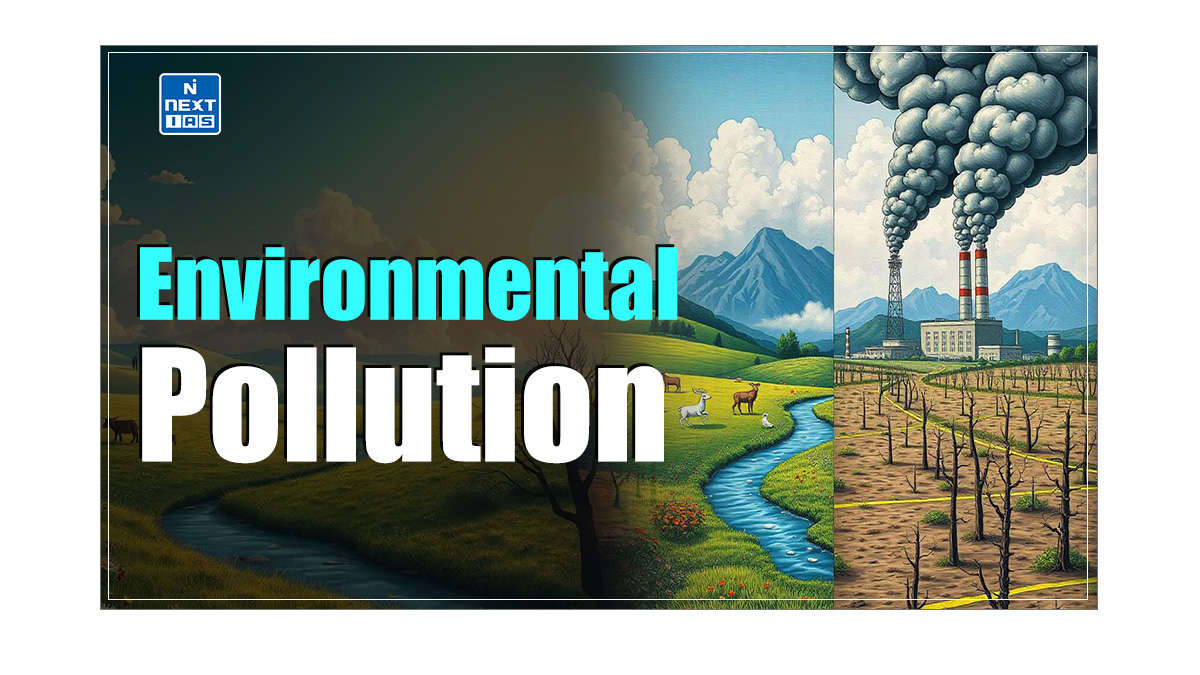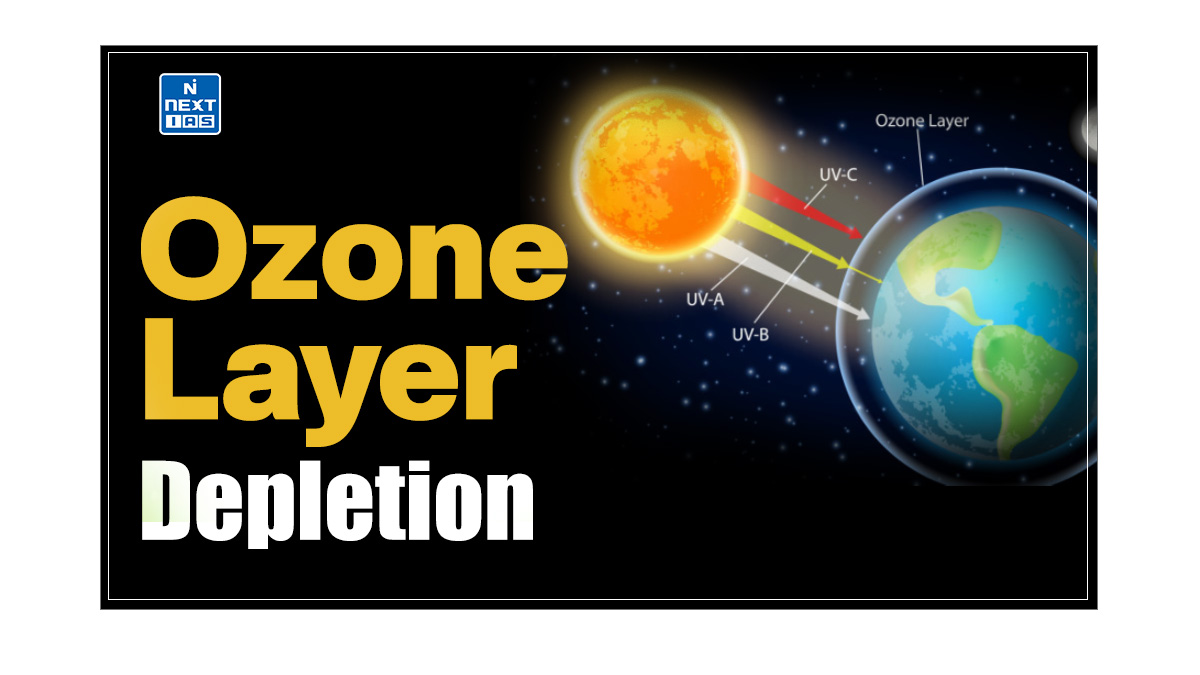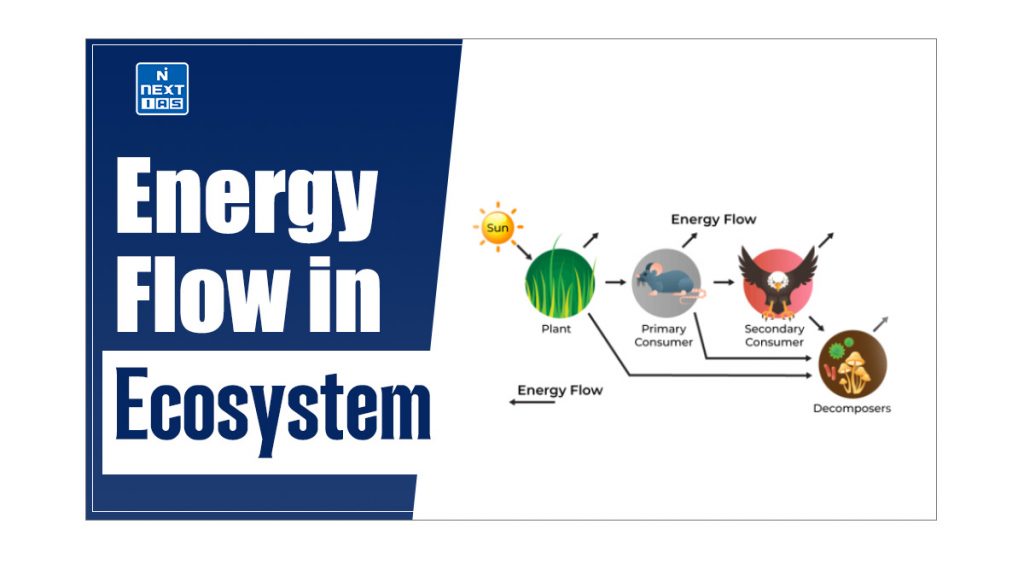
Energy Flow in Ecosystems describes how energy moves through the various components of an ecosystem. Understanding this flow is crucial for comprehending how ecosystems function, how organisms interact, and how environmental changes can impact ecological balance. This article aims to study in detail the concepts related to Energy Flow in Ecosystem, including Food Chain, Food Web, Trophic Levels, Ecological Pyramid among others.
What is Ecosystem?
- An ecosystem is a functional unit of nature where a community of living organisms interact among themselves and with the surrounding physical environment.
- An Ecosystem varies greatly in size and may be as large as a forest or sea or as small as a small fishpond, which provides a home for plants and other small animals.
Read our detailed article on the Basic Concepts of Ecosystem.
What is Energy Flow in Ecosystem?
- Energy flow in ecosystem refers to the movement of energy through a series of organisms, starting from primary producers to various levels of consumers.
- All the components of an ecosystem constantly interact with each other, which leads to the growth and regeneration of its plants and animal species.
- For this interaction to operate and continue, energy is required.
- The Sun is the ultimate source of energy for all the ecosystems in the world, except for the deep sea hydrothermal ecosystems.
- Energy from the sunlight is captured by primary producers and converted into chemical energy.
- This energy then moves from one organism to another as they consume one another, forming the basis of energy flow in ecosystem.
Energy Flow in Ecosystem: Flow Chart
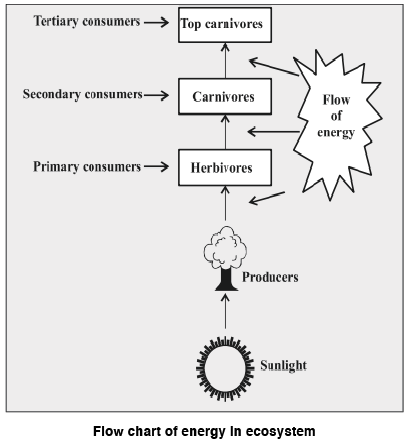
- Only 50 per cent of the solar radiation is Photosynthetically Active Radiation (PAR).
- The producers capture only 2-10 per cent of this PAR, and this small amount of energy sustains the entire living world.
- This energy goes through different organisms occupying trophic levels in an ecosystem.
- This is what is known as the energy flow in ecosystem.
Photosynthetically Active Radiation (PAR)
- It is the amount of light available for photosynthesis i.e. light in the wavelength range of 400 to 700 nanometer.
- PAR varies depending on the latitude and time of day.
- PAR also changes seasonally.
- It is needed for photosynthesis and plant growth.
- Higher PAR promotes plant growth.
Food Chains
- All the organisms need energy to grow, move and reproduce.
- For this purpose, smaller insects eat plants, bigger animals eat smaller insects and so on.
- This feeding relationship forms a food chain in an ecosystem.
- Thus, Food Chain is a linear sequence of organisms through which the transfer of energy and nutrients takes place.
- The energy and nutrients flow in the form of food from organism to organism by eating and being eaten.
- This is what forms the basis of energy flow in ecosystem.
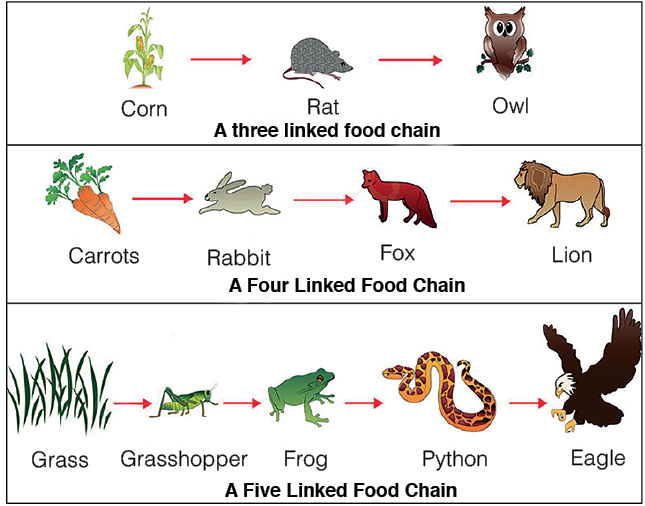
Trophic Level
- Each link in the food chain is known as the Trophic level.
- In other words, Trophic Level refers to the position of an organism in the food chain.
- It ranges from a value of 1 for primary producers to a value of 5 for marine mammals and humans.
- At the first trophic level, primary producers like green plants, algae, and certain bacteria make use of solar energy to produce organic materials through photosynthesis.
- The second trophic level is occupied by Herbivores, animals that feed solely on plants.
- Similarly, the third trophic level is occupied by Predators who eat herbivores.
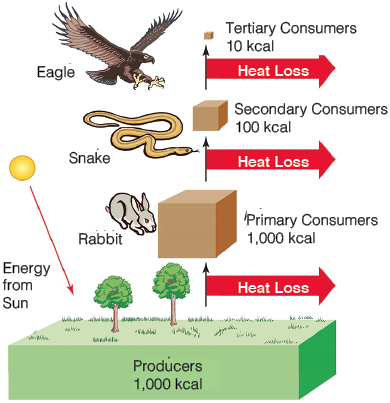
- In the energy flow in ecosystem, the highest amount of energy is concentrated in the first trophic level, subsequently dispersing into organisms of different trophic levels.
- The amount of energy decreases as one moves higher up in the trophic level in an ecosystem.
- On an average, about 10 per cent of net energy produced at one trophic level is passed on to the next level.
- As there is high energy loss at subsequent trophic levels, most terrestrial ecosystems have no more than five trophic levels, and marine ecosystems generally have no more than seven.
Note: Processes that reduce the energy transferred between trophic levels during the energy flow in ecosystem include respiration, growth and reproduction, defecation, and non-predatory death (organisms that die but are not eaten by consumers).
Types of Food Chains
Broadly, there are two types of food chains in any ecosystem – Grazing Food Chains and Detritus Food Chains.
Grazing Food Chains
- This type of food chain is more prevalent in those ecosystems where a substantial part of the net primary production is grazed on by herbivores.
- Thus, there is enough energy to support the higher trophic level and in turn a food chain.
- It starts from a green plant base, goes to grazing herbivores and on to carnivores.

Detritus Food Chains
- This type of food chain starts with dead organic matter which is decomposed by microorganisms, which, in turn, are eaten by other organisms.
- Thus, it is less dependent on direct solar energy and more on the supply of organic matter produced by another ecosystem.
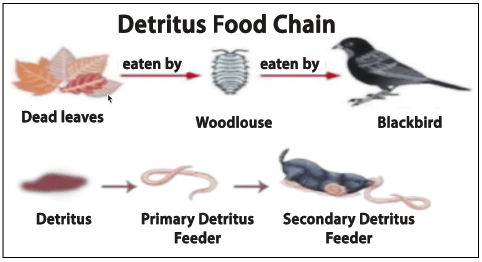
Food Web
- Food Chain follows a single path as animals eat each other.
- In a natural environment or an ecosystem, the relationships between the food chains are interconnected, as one organism may be a part of multiple food chains.
- Hence, in place of a linear food chain, a web-like structure is formed in energy flow in ecosystem.
- The web like structure is formed with the interlinked food chain and such matrix that is interconnected is known as a Food Web.
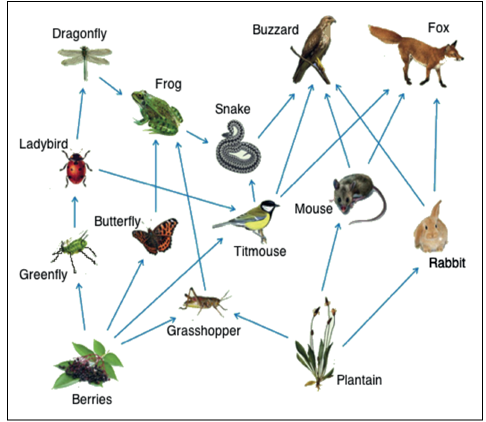
Food Chain Vs Food Web
| Food Chain | Similarity | Food Web |
|---|---|---|
| Single linear pathway | Represents who-eats-who | Made of several interconnecting pathways |
| Isolated food chains decrease the stability of the ecological community | 10% of energy passes from one trophic level to another | More complex food webs increase the stability of the ecological community |
| One individual occupies one trophic level only | One individual occupies many trophic levels | |
| Less adaptive | More adaptive |
Ecological Pyramids
- Ecological Pyramid is the graphical representation of the relationship between the producer and different levels of consumers in terms of a number of species, biomass or energy accumulated.
- They are the graphical representations of trophic levels in energy flow in ecosystem.
- They are also known as models of energy flow in an ecosystem.
- There are three types of ecological pyramids:
- Pyramid of Numbers
- Pyramid of Biomass
- Pyramids of Energy
Pyramid of Numbers
- It is the relationship between the producers and various consumers, as shown in terms of the population at each trophic level.
- A pyramid of numbers is advantageous over other types of pyramids because it is a simple method of showing energy flow in ecosystem.
- In this case, one only needs to count the number of organisms.
- Also, it is good for comparing changes to the ecosystem at different times of the year.
- However, it has limitations, as the number of species may be too high to measure accurately.
- It also includes all the organisms ignoring their sizes, which leads to inverted pyramids.
- Based on its shape, the Pyramid of Numbers are of two types:
Erect Pyramid of Numbers
- In these ecosystems, there are numerous small autotrophs that support lesser herbivores, which in turn support a smaller number of carnivores; hence, this pyramid is upright.
- This type of pyramid is found in the aquatic and grassland ecosystem.
- For Example: In grassland ecosystem, numbers of grasses are much more than the number of herbivores and, in turn, the number of herbivores is more than the number of carnivores.
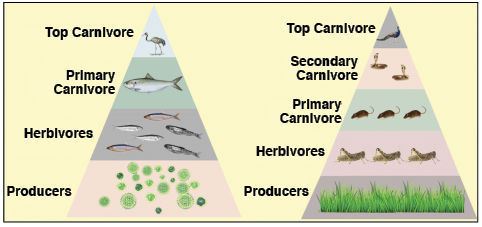
Inverted Pyramid of Numbers
- This type of ecological pyramid is seen in a parasitic food chain where one primary producer supports numerous parasites, which support more hyperparasites.
- For example: In the Tree ecosystem, there are many herbivores feeding on a single tree. In turn, the numbers of parasites feeding on a single herbivore are many.
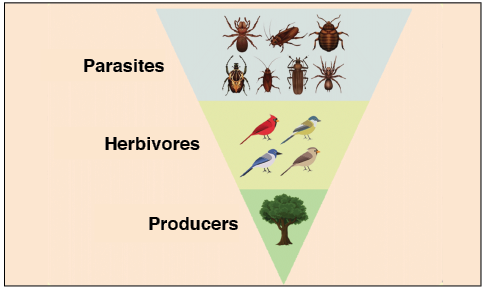
Pyramid of Biomass
- It is the graphical representation of the producers and various levels of consumers in terms of their biomass.
- A pyramid of biomass is a more accurate indication of how much energy flow in ecosystem happens at each trophic level.
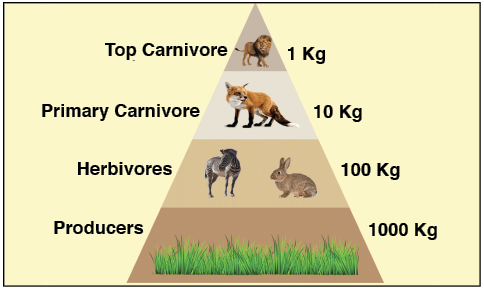
- Pyramid of biomass can be erect as well as inverted.
Erect Pyramid of Biomass
- This occurs when the larger net biomass of producers support a smaller weight of consumers.
- In most of the terrestrial ecosystem, it is erect.
Inverted Pyramid of Biomass
- This happens when the smaller weight of producers supports consumers of larger weight.
- It is especially found in the case of aquatic ecosystems.
- For example, in a pond ecosystem, the phytoplankton (the producers) has a very short span of life and a rapid turnover rate (i.e. they are rapidly replaced by new plants).
- Thus, at any given time, their total biomass is less than the biomass of the herbivores they support.

Pyramids of Energy
- It is the graphical representation of the producers and various levels of consumers in terms of the total energy accumulated by them.
- As the energy flow in ecosystem decreases while moving higher up in the trophic level, the pyramid of energy is always erect, both in aquatic and terrestrial ecosystems.
- This method of showing energy flow in ecosystem overcomes the issue with above methods as it shows the actual energy transferred.
- However, this method of showing energy flow in ecosystem has one lacunae that it is very difficult to collect the energy data of a trophic level.
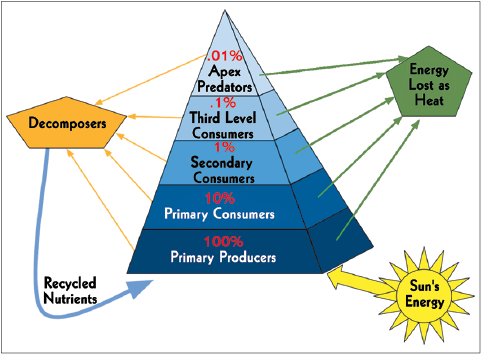
Ecological Efficiency
- Ecological Efficiency is defined as the ratio between the amount of energy acquired from the lower trophic level and the amount of energy transferred to the higher trophic level.
- Thus, it describes the efficiency with which energy is transferred from one trophic level to the next during the energy flow in ecosystem.
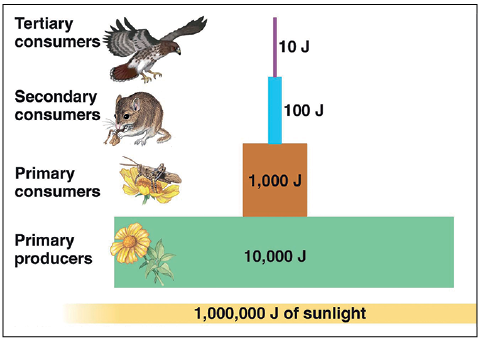
- During the energy flow in ecosystem, the amount of energy transferred from one trophic level to the next decreases because some portion of the energy is lost in respiration or metabolism, and some portion is lost as heat.
- Lindman proposed the 10 per cent rule in 1942 for ecological efficiency i.e. only 10 per cent of energy is transferred from one trophic level to the next trophic level during the energy flow in ecosystem.
Pollutants and Trophic Levels
A pollutant is any substance that, upon introduction to an ecosystem, affects it adversely by reducing its productivity, stability, and usefulness and reduces the growth rate of species or interferes with food chains.
Bioaccumulation
- It is the process through which a substance or pollutant accumulates in living organisms and it happens over a period of time.
- One of the functions of the body is to remove the unwanted and toxic substance.
- Bioaccumulation starts when the rate of accumulation of the pollutant becomes greater than the rate of removal.
Biomagnification
- It refers to the tendency of pollutants to accumulate in increasing concentrations as they move from one trophic level to the next.
- Thus, in biomagnification, there is a rise in concentration of a pollutant from one link in a food chain to another.
- In order for biomagnification to occur, the pollutant must be long-lived. Example: Mercury, Cadmium in shellfish.
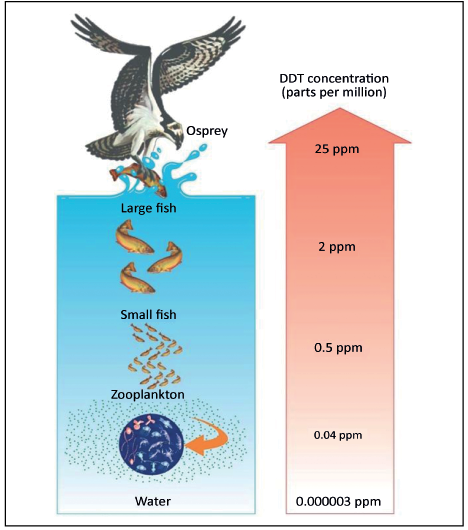
Conditions for Bioaccumulation
- The pollutant should be highly mobile.
- It should be soluble in fat.
- It should have a longer lifetime.
- It should be biologically active.
Bioaccumulation Vs Biomagnification: A Comparison
- Bioaccumulation is when the concentration of pollutant increases inside an organism whereas biomagnification is the comparative increase in the concentration of the pollutant in the organism of higher trophic level as compared to the concentration present in the organism of lower trophic level.
- Thus, bioaccumulation takes place within a given trophic level but we talk about biomagnification as we move higher in the trophic level.
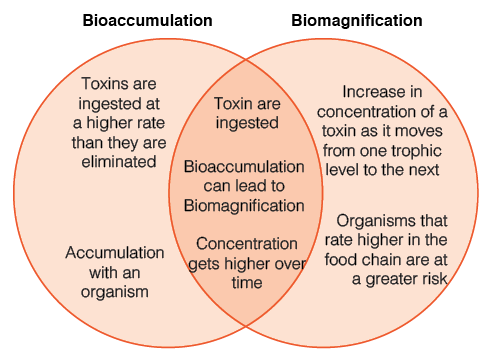
Conclusion
Energy flow in ecosystem is a vital process that sustains the structure and function of ecological systems. By recognising the implications of energy flow in ecosystem and implementing effective conservation strategies, we can support the sustainability and health of ecosystems for future generations.
Frequently Asked Questions (FAQs)
Why is the energy flow in ecosystem important?
Energy flow in ecosystem is important for supporting life processes and maintaining ecological productivity.
What is the 10 percent law of energy flow in ecosystem?
The 10 percent law of energy flow says that only 10 per cent of energy is transferred from one trophic level to the next trophic level during the energy flow in ecosystem.
What direction does energy flow in an ecosystem?
Energy flows through an ecosystem in a unidirectional manner, typically starting with primary producers and moving up through various trophic levels.

